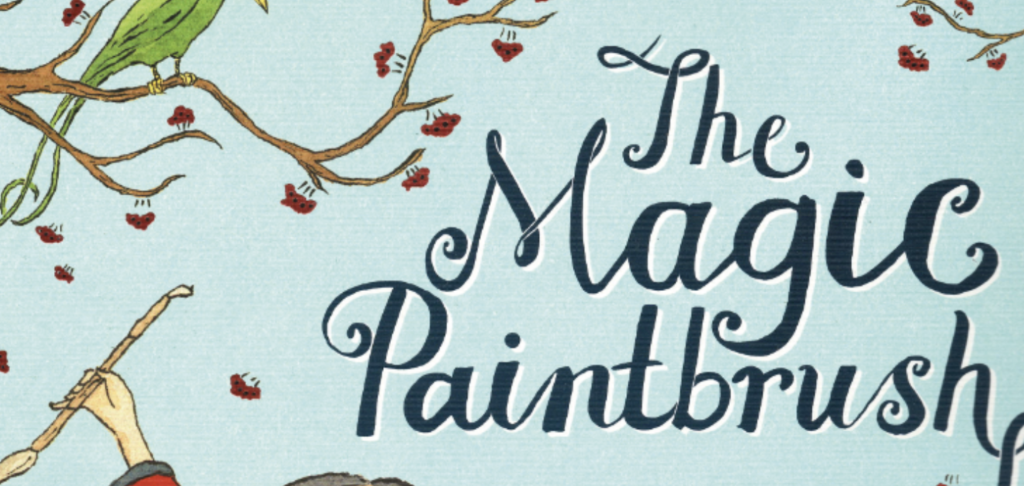Introduction The goal for this blog post is to craft a captivating short story that addresses the urgent issue of plastic pollution, offering both insights into the problem and solutions. Tailored for both three to five-year-old’s and the adults sharing the experience, the narrative will draw inspiration from Julia Donaldson’s picture book ‘The Magic Paintbrush’ and her distinctive rhyming style. Despite the roots of her book in Chinese folklore, my story will not adopt an oriental style. Below, you’ll find some images capturing a few cherished pages from Julia Donaldson’s book, serving as inspiration for my own creative journey. Initial Story Writing Research To begin the development phase some initial research into how to develop a children’s book was important for gaining a knowledgeable understanding of how to communicate my goals and articulate my ideas clearly throughout my own narrative development. Bookfox, 2023 provided great insight into the process and important assets that go into a children’s book. Below are some quick points that I will think about throughout the development phase. The below images were taken from the Bookfox website and are helpful visual representations of how to develop a captivating narrative. I will refer back to these to ensure my narrative stays relevant and good quality (Bookfox, 2023). Plastic Pollution Research Arabella Ruiz states that ‘plastic is one of the most commonly used materials in the world. It is cheap to produce and can be moulded into just about any shape or size. This makes it a popular choice for many products. However, plastic is also one of the most harmful materials when it comes to the environment. It takes centuries for plastic to decompose, and during that time it can contaminate soil and water supplies. There are also huge quantities of plastic floating in our oceans, which has a hazardous effect on marine life.’ (Ruiz, A. 2023). Taking this knowledge on board I am able to structure a realistic story with depth. Arabella Ruiz states that plastic can be moulded into just about any shape and size, this discovery has inspired me to craft a story where the main character will make new things out of plastic waste, therefore incorporating the reduce, reuse, and recycle ethos into my project. She also states that our oceans are polluted with plastic waste, although this is a major issue my narrative is likely to be set in land and therefore the story may not incorporate the ocean but reference the issue in a different way. Current organisations are taking on more responsibility when it comes to plastic pollution, most sustainable clothing company’s now offer clothing made out of recycled plastics. Items such as hoodies, bags and shoes. Arabella Ruiz also communicates that items such as furniture, toys, homeware, and utility items are also being made out of recycled plastic, (Ruiz, A. 2023). The fact that these recycled plastic items are currently been introduced to reduce the impacts of plastic pollution, opens up new possibilities for the main character in my story to craft useful items. This will ensure my story remains fresh and relevant to our ever-changing everyday lives. Initial Narrative Ideas In my initial mind map below, I sought to explore ideas and themes that aligned with my vision of crafting a unique story. The central concept revolves around a main character actively addressing the issue of plastic pollution. By highlighting the portions, I intent to develop further, it is clear that the journey of my protagonist will involve building useful things out of disregarded plastic items. This concept not only aligns with the environmental ethos of reduce, reuse, and recycle but also incorporates inspiration I have taken from Julia’s Donaldson’s story ‘The Magic Paintbrush’. The mind map also explores aspects of English language I intend to include throughout the book such as onomatopoeia to depict sound. Expanding on my initial mind map, I further explored the ideas by producing a focused narrative mind map. Drawing inspiration from Julia Donaldson’s rhythmic style. Choosing Sheffield as the story’s setting stems from a personal fondness for the city, adding a distinctive backdrop to the narrative, which will also be useful when developing illustrations as I am familiar with the setting. Moreover, I decided to base the main character on my niece Penelope, infusing the story with a personal touch and making the narrative resonate and relatable. This deliberate development choice aims to create a connection between the narrative and my own experiences, enhancing the emotional depth and authenticity of the story. Narrative Development I have generated three distinct mind maps to shape and explore aspects of the developing narrative. The first mind map explores potential openings, setting the stage for an engaging introduction that captures the audience, and introduces the theme and main character. The second mind map explores various possibilities for the middle of the story, allowing for an exciting development throughout the middle of the narrative. Finally, the third mind map focuses on potential endings, offering a resolution to the problem created throughout the narrative. This organized approach helps me structure the narrative cohesively, ensuring a well-rounded and compelling narrative from start to finish. Scenario Overview Below is an overview of the developing narrative scenario, developed from the initial research/idea generation process. The narrative overview ensures my narrative stays relevant and doesn’t sway from my meticulously throughout vision. Each section of the story will be in four parts, along with each paragraph that tells the story. This will ensure a clear rhythm and structure is articulated throughout the narrative from start to finish. First Draft The initial draft has been inspired by the scenario overview. As I began writing this in my notebook, content took over the need for structure. However, upon organising the story into 12 paragraphs, to cover the whole of the book my previous intention of maintaining a consistent four-line length for each segment fell through. This realisation prompted me to acknowledge the importance of adherence to the initial plan. Therefore, in the upcoming




